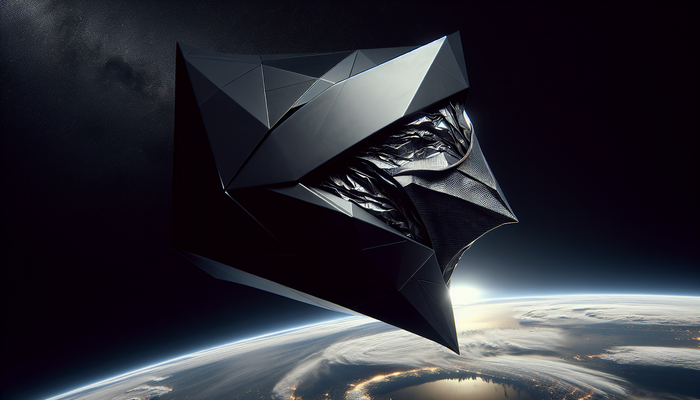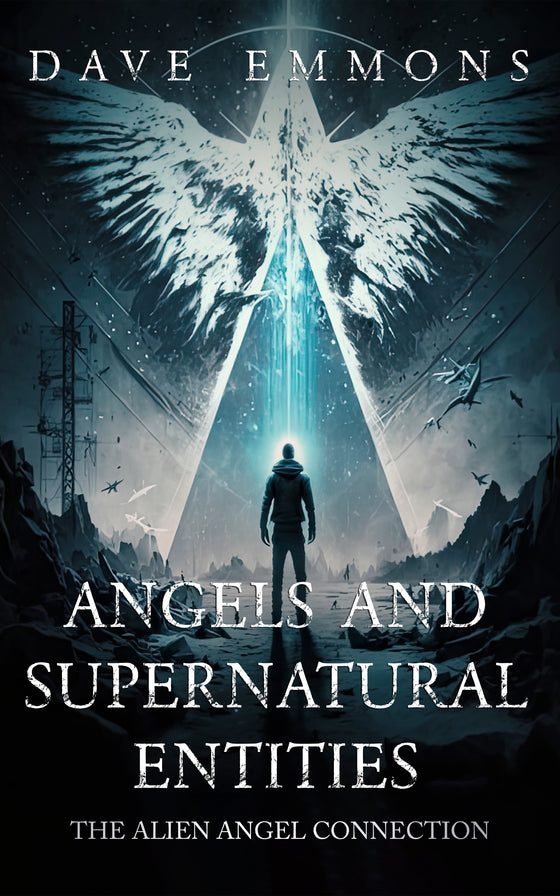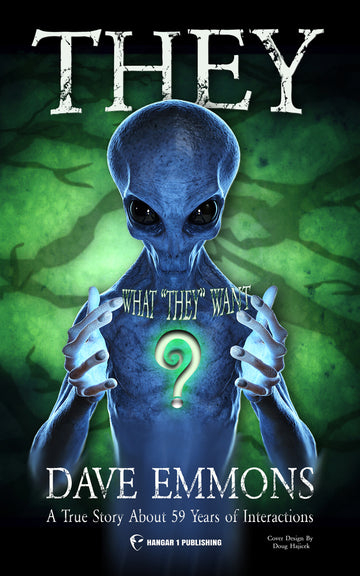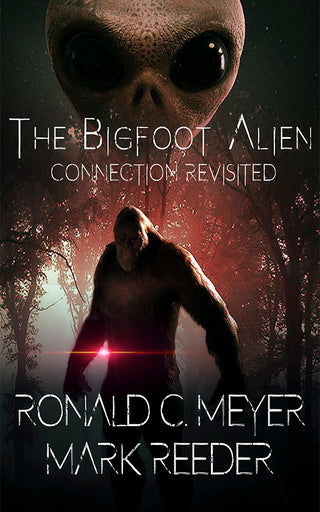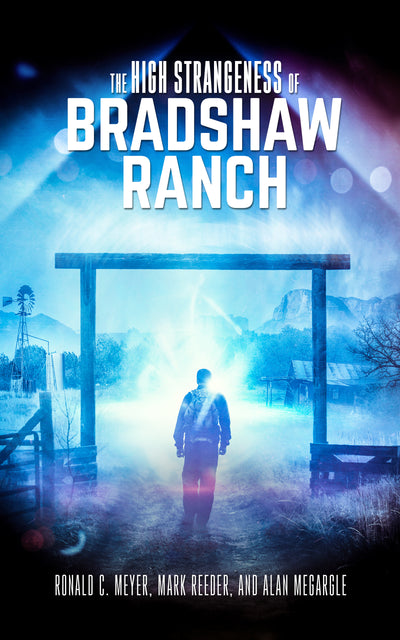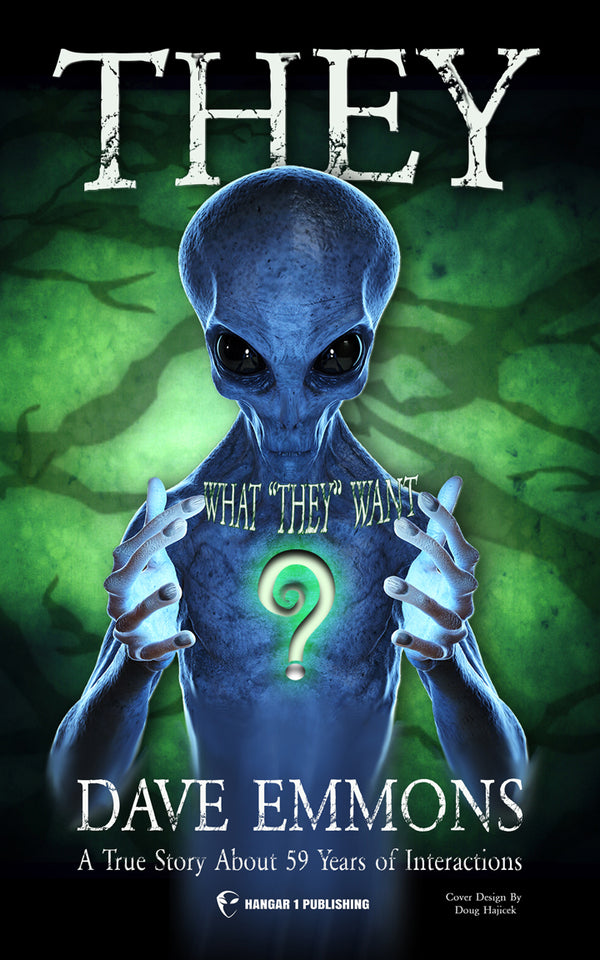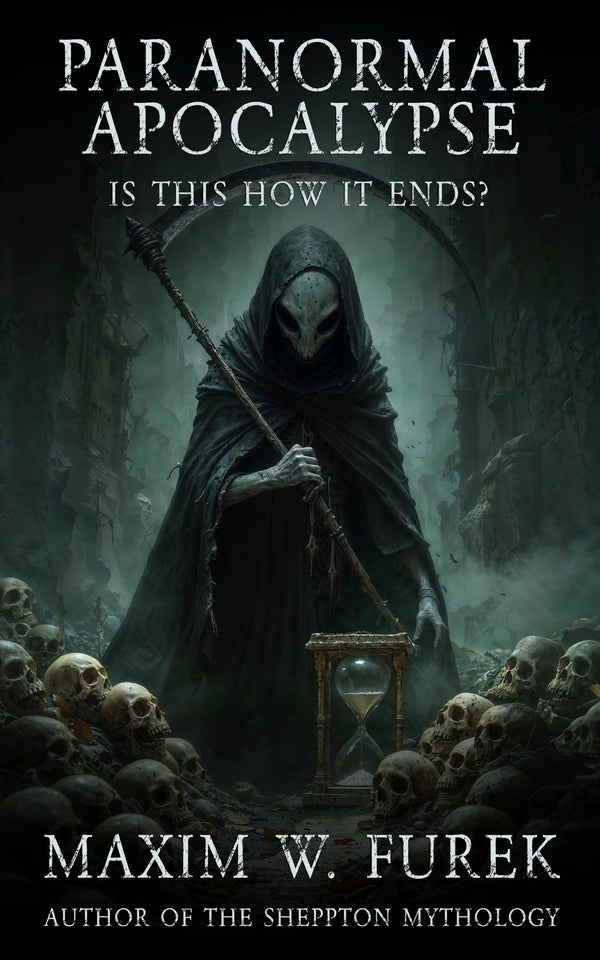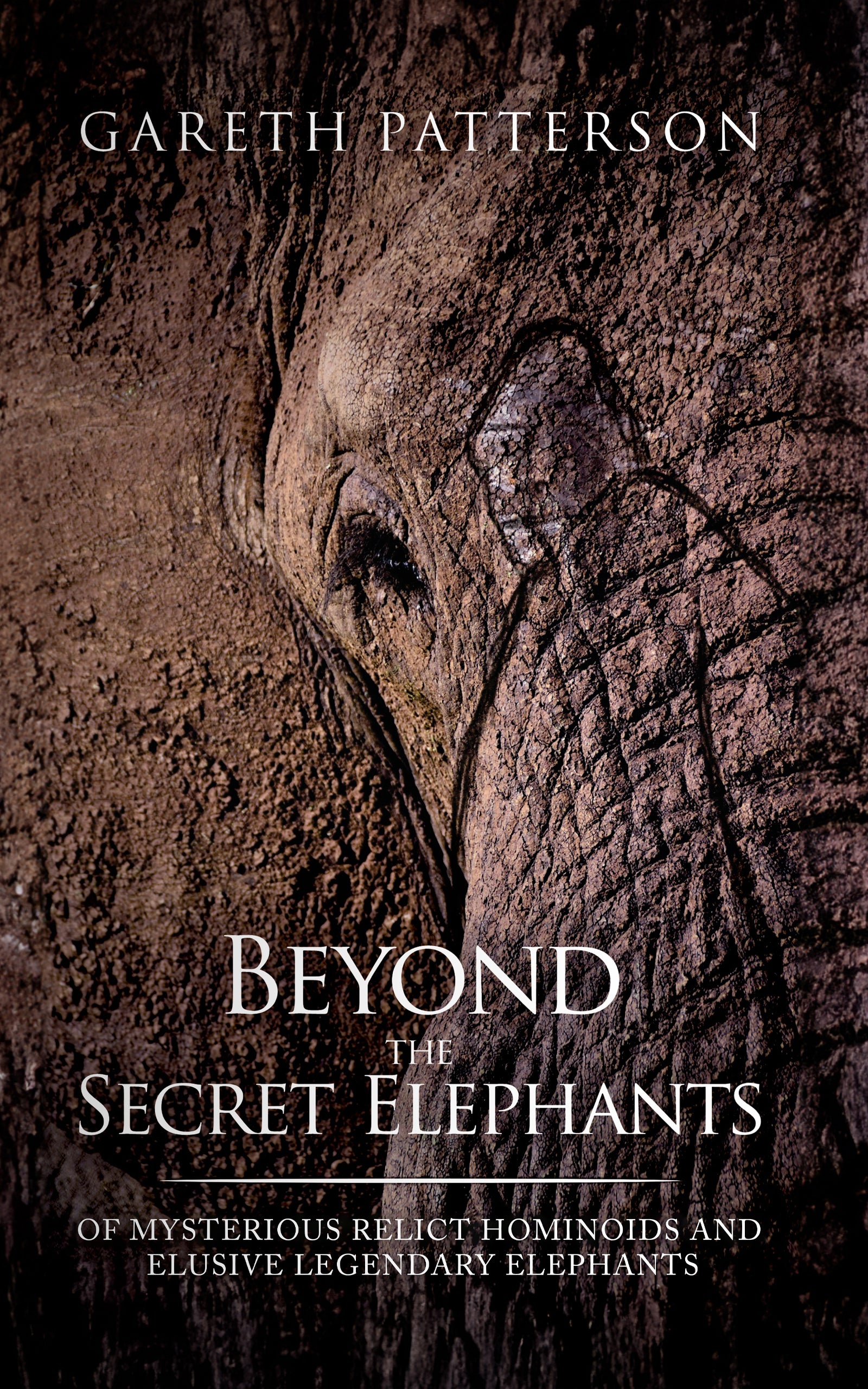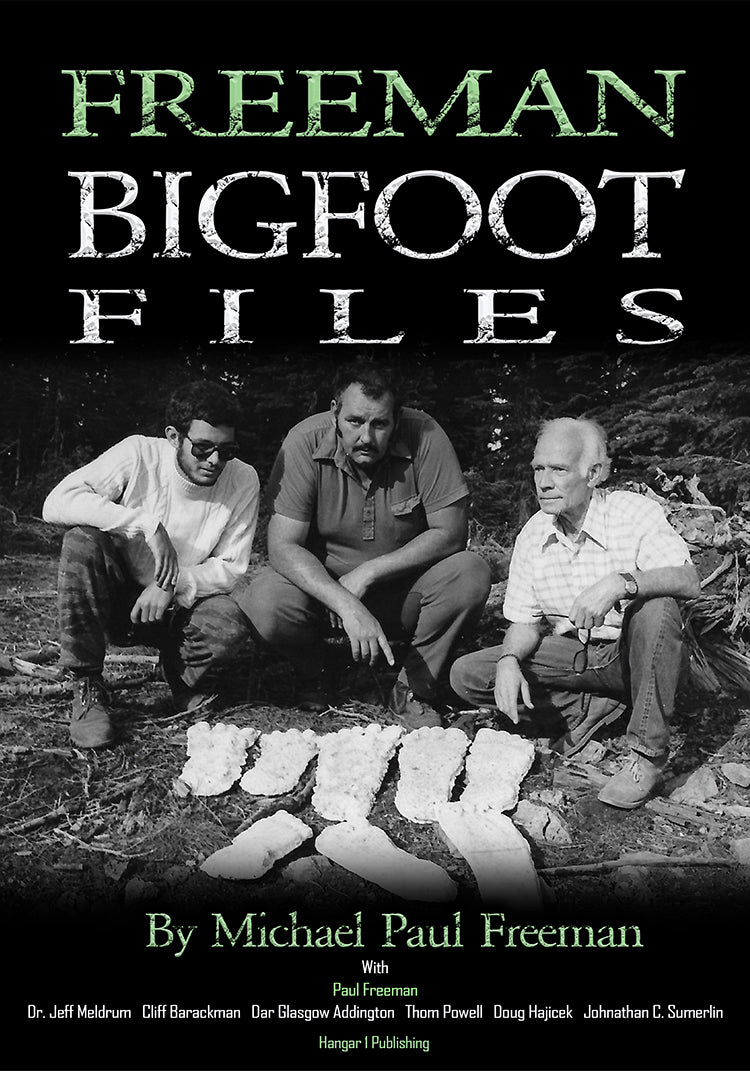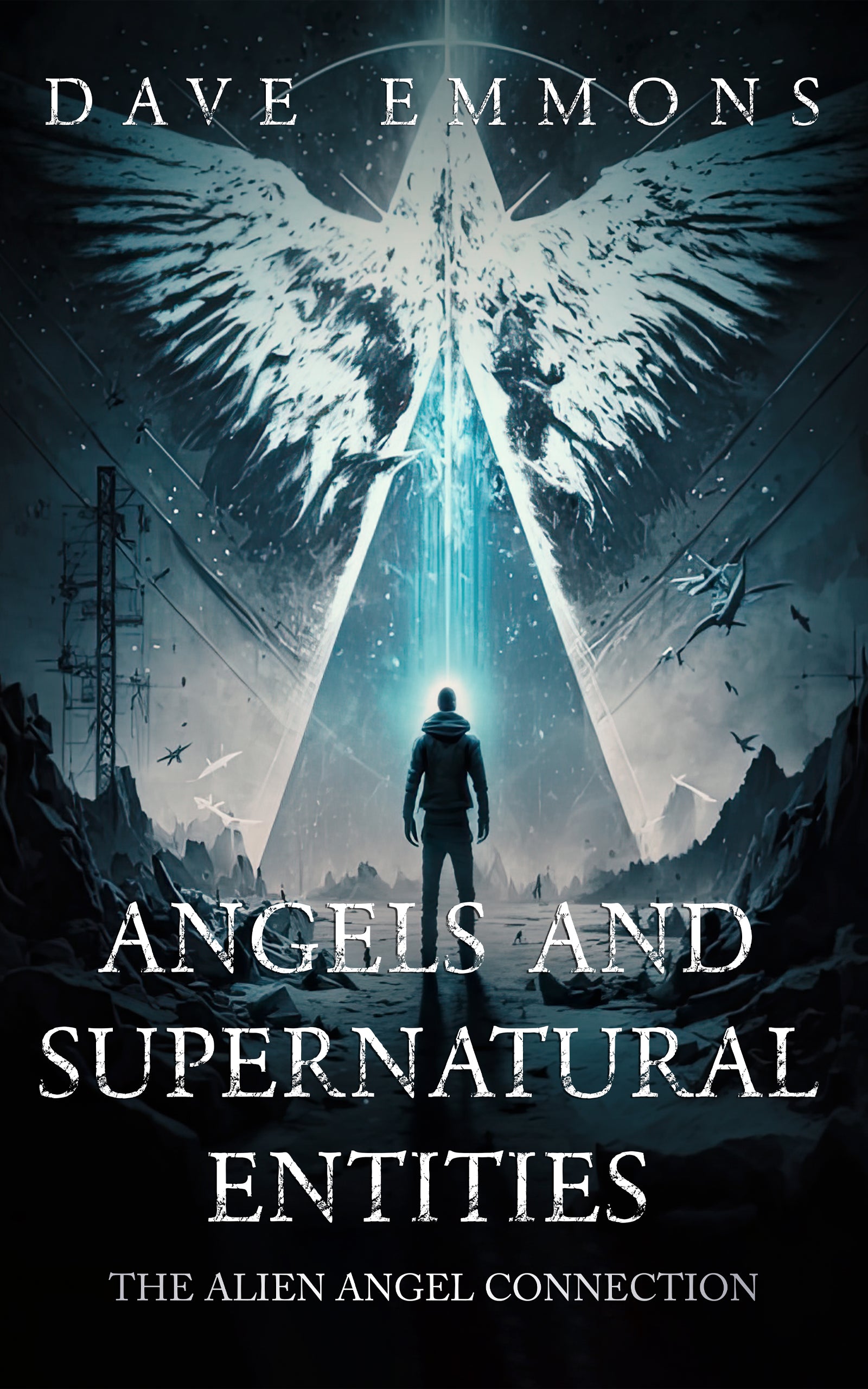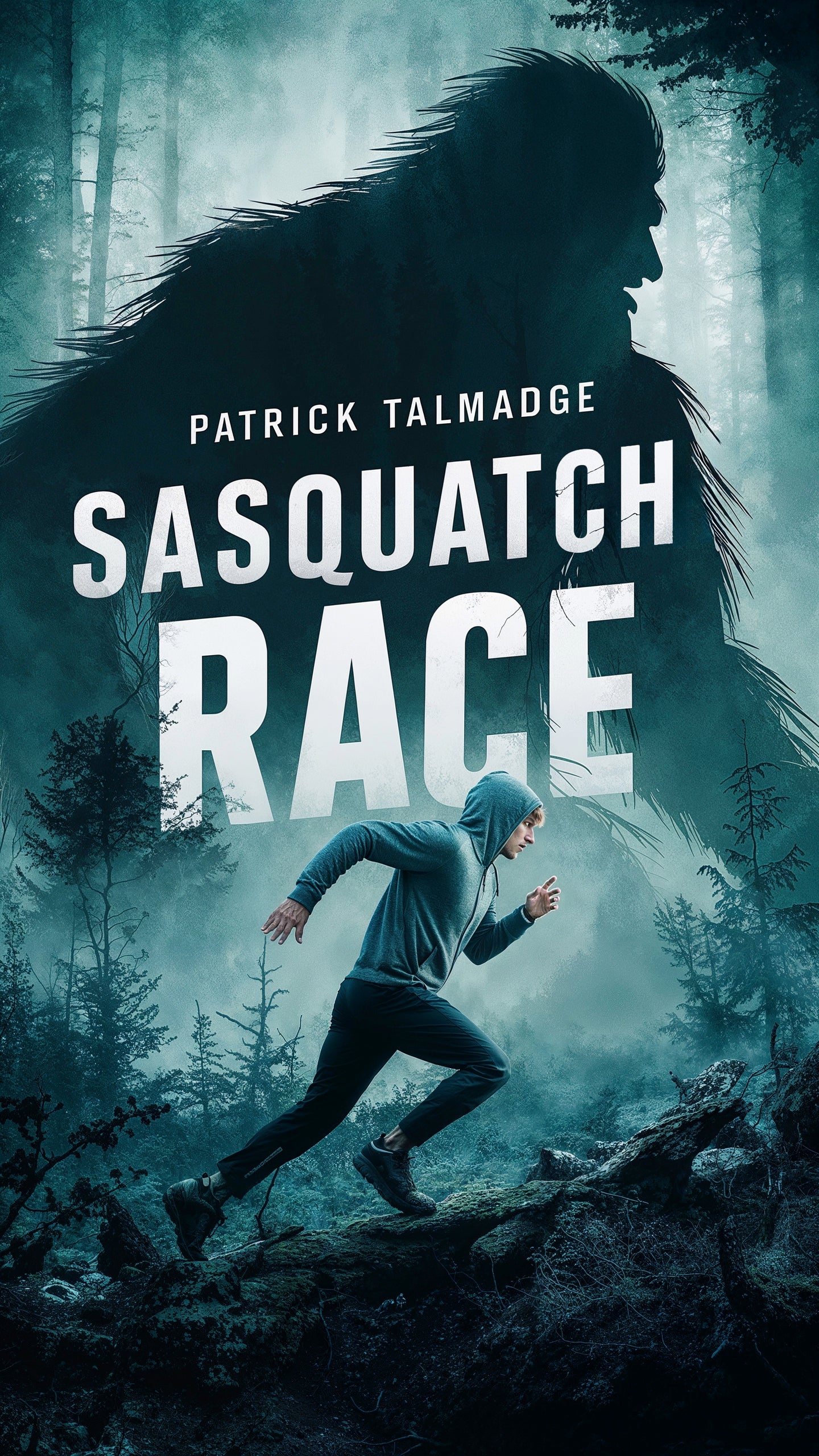Remote Viewing and Aliens: Exploring Psychic Contact with NHI
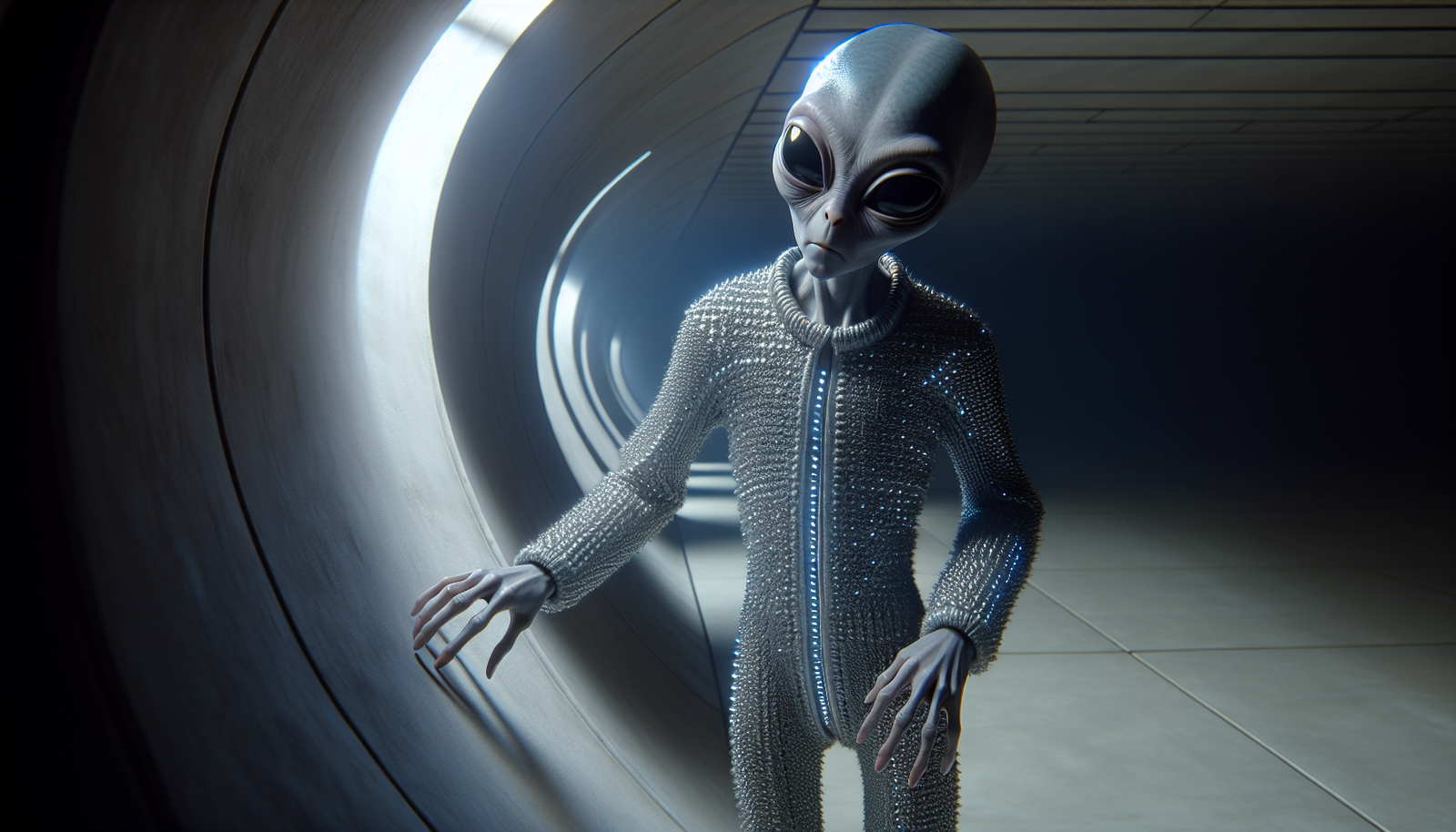
By Malcolm Blackwood, Ufologist
We’ve all looked up at the night sky and wondered if we're truly alone in the vastness of the cosmos. But what if the most profound answers about our place in the universe aren't found by scanning distant stars with telescopes, but by turning our attention inward? What if the very fabric of human consciousness holds a hidden key, a potential bridge to understanding the persistent puzzle of non-human intelligence? This exploration ventures into the intriguing territory where a specific psychic ability, known as remote viewing, intersects with the complex subject of aliens and Unidentified Anomalous Phenomena (UAP).
Remote viewing, in essence, is described as a structured protocol designed to harness a purported psychic ability allowing individuals to perceive information about targets – people, places, objects, or events – distant in space or time, shielded from their normal senses. Its history is surprisingly intertwined with institutional research, particularly within government circles. Alongside this, we encounter the modern term Non-Human Intelligence (NHI), a broader category encompassing what popular culture has long labeled "aliens." This article aims to chart the surprising confluence of these fields, examining the history, the methods, and the sometimes startling findings reported by those who practice remote viewing, drawing directly from historical records and firsthand accounts of the viewers themselves. It offers a unique perspective, moving beyond mere speculation to examine specific cases and the reported experiences of individuals who claim to have psychically probed the unknown.
The Secret History – Government Eyes on the Cosmos
The connection between remote viewing and the corridors of power isn't science fiction; it's documented history. For over two decades, the U.S. military and intelligence communities poured millions of dollars – estimates reach $20 million – into researching and potentially weaponizing this psychic capability. Programs operating under codenames like Stargate and Grill Flame, supported by agencies including the CIA, DIA, and others, sought to understand if human consciousness could be leveraged for espionage. This wasn't a fringe operation tucked away in a basement; it involved significant resources and personnel.
Figures like Skip Atwater, who became the Operations and Training Officer for the Army's remote viewing unit, played key roles. Atwater recounts how, as a Counter Intelligence agent stationed at Fort Huachuca, Arizona, he and a colleague encountered the book Mind Reach, detailing early remote viewing studies from Stanford Research Institute (SRI). Recognizing the potential threat – if enemies possessed such capabilities – Atwater brought it to his commanding officer's attention. This concern, rather than being dismissed, led to official interest and eventually Atwater's assignment (after a detour from a Pentagon posting) to Fort Meade, Maryland. Behind the proverbial "Green Door," he discovered classified documents detailing existing Department of Defense interest in remote viewing, spurred partly by General Thompson, who had connections to CIA research via Kit Green. This institutional backing, however classified, set the stage for the military's active recruitment and "evaluation" (SRI's preferred term over "training") of potential remote viewers.
Early pioneers within these government-funded programs, such as Pat Price and Ingo Swann, were reportedly tasked, at least occasionally, with targets described as "otherworldly." The exact nature of these early targets remains somewhat opaque in the public record – were they explicitly designated as extraterrestrial, or simply anomalous phenomena defying conventional explanation? Sources like the book Remote Viewing UFOS and the VISITORS suggest that viewers like Joseph McMoneagle, arguably one of the most scientifically validated remote viewers, were tasked double-blind against famous UFO cases.
This created an inherent tension. Remote viewing protocols, particularly Controlled Remote Viewing (CRV) developed by Swann at SRI, emphasized a structured, almost rigid process. Viewers worked "blind," knowing nothing specific about the target, often just given a random number or coordinate. They recorded data meticulously – sensory details, sketches, emotions – aiming for objective description rather than interpretation. This data was then compared against known "feedback" about the target to assess accuracy. Yet, the potential targets in the UAP realm were anything but conventional. How does one describe technology that seemingly defies physics, or entities unlike anything known on Earth, using a structured, sensory-based protocol? This challenge, pairing scientific rigor with the truly strange, defines the unique contribution remote viewing claims to offer to the UAP investigation.
Remote Viewing Specific UAP Events – Psychic Probes into the Anomalous
When rigorously applied protocols meet baffling phenomena, the results can be fascinating. Remote viewers haven't just speculated about aliens in the abstract; they've directed their focus towards specific, well-documented UAP incidents, attempting to provide data beyond what conventional sensors recorded.
The USS Nimitz 'Tic Tac' Encounter
Take the infamous 2004 USS Nimitz 'Tic Tac' encounter. Daz Smith, a professional remote viewer, described his sessions targeting this event. His perceptions, recorded blind, included descriptions of the object's movements mirroring the incredible speed and erratic behavior reported by F/A-18 pilots like Commander David Fravor. Smith noted a particularly baffling quality: the object seemed to become "non-physical at times," as if phasing in and out of our dimension or perhaps moving between states of reality. He attempted to perceive and sketch the object's propulsion system and construction, creating detailed drawings of its internal workings – layers interacting with energy. While such internal details are unverifiable with current public knowledge, they represent the kind of granular information RV attempts to access. Curiously, Smith reported not perceiving any life forms associated with the Tic Tac, leading him to wonder if it was perhaps an exceptionally advanced drone, aligning with some theories about the nature of certain UAPs.
The Roswell Incident
The Roswell incident of 1947, a foundational case in UAP lore, has also been a frequent target. Daz Smith, having a long-standing interest in the case before ever being tasked with it blindly, reported perceiving a non-human, manufactured craft that had come down. His data leaned towards a natural cause, possibly a lightning strike, though he acknowledged other viewers, including Ingo Swann, perceived indicators suggesting it might have been intentionally downed. Smith described non-human entities aboard, some deceased, but at least one survivor who, along with the wreckage, was retrieved by military personnel and transported to a secret facility. His focus remained primarily on the crash event, the craft, and the entities present, rather than tracing their point of origin in that particular session, though he mentioned doing so in other NHI-related viewings, perceiving potential waystations or "forward operating bases" on the Moon or Mars.
Other Historical Cases
Other historical cases have also reportedly been put under the remote viewing lens. Joseph McMoneagle, according to the book Remote Viewing UFOS and the VISITORS, was tasked double-blind with events such as the strange lights encountered by Japan Airlines Flight 1628 over Alaska in 1986 (not 1987 as sometimes misreported), the alleged abduction of Travis Walton in 1975, the Rendlesham Forest incident in the UK in 1980, and even the 1917 Fatima "Miracle of the Sun." In each instance, the aim was to generate raw data from the viewer, blind to the specifics, which could then be compared to witness testimony, radar records, or other available evidence. While the information generated is inherently speculative and difficult to verify absolutely for many historical or contested events, it offers a potential stream of additional detail, sometimes aligning with known facts, sometimes offering novel and uncorroborated perspectives, further complicating or perhaps illuminating these enduring mysteries. The value, proponents argue, lies in the consistency achieved under blind conditions, suggesting access to information beyond guesswork or prior knowledge.
Portraits of the Visitors – Encountering NHI Through the RV Lens
Beyond the craft and events, what about the occupants? Remote viewing sessions targeting NHI have generated surprisingly consistent descriptions of the beings allegedly encountered. A composite picture emerges from the data shared by viewers like Daz Smith and the participants in Skip Atwater’s Project 8200, which aimed to validate earlier claims by Pat Price.
Descriptions of the Entities
The most frequently described entities align with the "typical gray-looking ones." These beings are often perceived as small (perhaps four to five feet tall), thin, physically fragile, with the characteristically large, dark eyes. Their disposition is generally reported as non-aggressive towards humans. However, descriptions often include terms like "sterile," "detached," or possessing "programmed feelings." Daz Smith likened their attitude to that of a doctor examining a patient – focused on a task, but without deep emotional involvement. This emotional distance aligns with the unsettling concept, reported in multiple RV sessions, that these beings view humanity as a kind of "project" or a "garden" they are "tending." The metaphor implies meticulous, long-term observation and potentially manipulation – perhaps genetic, perhaps societal – spanning millennia, all conducted without seeking our permission, much like a human scientist might study an animal population.
Different Categories of NHI
But are the Grays the only players? Some RV accounts suggest a more complex picture. A fascinating, though anonymously sourced, Reddit post by someone claiming to be a remote viewer introduces different categories. This source distinguishes between "Short Greys" – described as genetically engineered, empty biological vessels perfect for space travel, remotely operated like avatars by the consciousness of beings from a "Galactic Federation" – and "Tall Greys." The Tall Greys are depicted as a separate faction, having broken away from the Federation due to differing ideologies. These Tall Greys are allegedly responsible for the more disturbing reports of human abductions and cattle mutilations, driven by a need for DNA to repair their own damaged bodies resulting from interstellar travel, having lost the Federation's technology to create new vessel bodies. This narrative attempts to reconcile the conflicting reports of benevolent and malevolent alien encounters. The same source introduces "The Master," a "Nordic" type being residing in Antarctica, overseeing humanity's development as part of the Federation's plan to engineer allies and expand their collective.
Communication and Technology
Communication with these entities, as perceived through RV, also seems to bypass conventional methods. Daz Smith prefers the term "consciousness communication" over simple telepathy, suggesting a direct mind-to-mind or consciousness-to-consciousness exchange. This extends, remarkably, to the technology itself. Viewers report that not only the craft but also tools and even the clothing worn by these beings feel "sentient" and are "symbiotically connected." Everything operates within a highly advanced, integrated, conscious system, perhaps akin to a biological internet merged with artificial intelligence far beyond our current comprehension. It paints a picture of an existence where the line between biology, technology, and consciousness is blurred, operating on principles we are only beginning to grasp.
The Geometry of Existence – Time, Space, and the Quantum Connection
How is it possible for a person sitting quietly in a room to perceive details of a crashed craft decades ago, or events happening thousands of miles away, or even the internal workings of an unknown technology? Proponents of remote viewing often point towards principles drawn from quantum physics, specifically quantum non-locality and entanglement, as potential explanations. These concepts challenge our everyday understanding of reality, suggesting that at a fundamental level, space and time as we experience them might be constructs, not absolutes. Non-locality posits that information isn't strictly confined to a specific point but can be instantaneously connected across vast distances – the "everywhere, everywhen" that Skip Atwater refers to.
Quantum Non-Locality and Entanglement
This theoretical framework suggests that a remote viewer isn't mentally "traveling" to a target but is rather accessing information inherent within a universal field or matrix, perhaps facilitated by entanglement – the "spooky action at a distance" that connects particles no matter how far apart they are. Could consciousness itself be entangled with this universal information field? A compelling anecdote illustrating this non-local access comes from the early days at SRI. Pat Price, a gifted viewer, was given coordinates by the CIA monitor Kit Green. Green himself didn't know the target; he'd gotten the coordinates from a colleague, intending it to be his friend's newly built cabin in the mountains – a presumably mundane target to test SRI's protocols. Price, however, described not the cabin, but a highly secret Navy installation nearby called Sugar Grove, detailing classified project names ("Q-ball," "Eight-ball") related to monitoring Soviet satellites. This wasn't the assigned target, but it was arguably the most significant information in that vicinity. It suggested that RV might be drawn not just to coordinates, but to points of high interest, complexity, or perhaps even conscious activity, bypassing the intended focus. This incident caused considerable alarm within intelligence circles, highlighting the potential power and unpredictability of the phenomenon.
NHI and Non-Linear Reality
This defiance of conventional space-time limitations might also apply to NHI themselves. The phasing, non-physical behavior described in the Tic Tac RV sessions hints at technology or beings capable of operating outside our linear perception, perhaps shifting between dimensions or states of being. Skip Atwater shared a personal out-of-body encounter where an alien entity attempted to explain interstellar travel. Dismissing the human concept of traveling very fast for a long time, the entity used the metaphor of a multi-sided Rubik's Cube, where each face held a periodic table representing a different location in the universe. To travel, one didn't traverse space, but metaphorically "twisted the cube" to bring the desired location's reality (represented by its elemental chart configuration) into alignment. Later, the insight came to Atwater that perhaps one didn't even need to twist it, but simply turn it – implying a shift in perspective or consciousness could alter one's location in reality. While abstract, this illustrates a potential consciousness-based method of navigating existence, fundamentally different from our propulsion-based models.
Alleged Underground Bases
This idea of hidden realities extends to the findings regarding alleged underground NHI bases, notably explored in Atwater's Project 8200. Following up on Pat Price's 1973 claims, Atwater tasked several Stargate viewers with the coordinates Price had identified for bases under Mount Hayes (Alaska), Mount Inyangani (Zimbabwe, formerly Rhodesia), Mount Perdido (Spain/France border), and Mount Zeal (Australia). Ten years after Price, working blind, viewers like Bill Ray described bitterly cold, hollowed-out mountains containing vast caverns, high curved ceilings, sterile environments, monitoring and life-support equipment, and silver metallic ships. They also perceived the thin, unemotional beings with "programmed feelings" and a "predesigned mission," focused on research and security, who seemed keen on remaining undiscovered. How might such extensive facilities remain hidden? RV data itself suggested the beings might employ a form of "programmed telepathy" or perceptual manipulation to deter potential discoverers or conceal entrances, interacting with human consciousness rather than relying solely on physical camouflage.
The Current Climate – Disclosure, Uptick in Sightings, and the AI Factor
In recent years, the UAP topic has undeniably surged back into public consciousness, accompanied by increased sightings reported by both military personnel and civilians, and a notable shift in governmental acknowledgement. Remote viewers have also weighed in on this heightened activity. Daz Smith, for instance, predicted increased "dog fights in the sky between unconventional moving craft and conventional moving craft" prior to the news hitting.
Increased Sightings and RV Perceptions
Anecdotal accounts from less formal remote viewing experiments, like the one detailed concerning the "UFO Drones above New Jersey," offer intriguing perceptions. The viewer described perceiving these objects – often reported as orbs or spheres – as "eyes looking, smelling, scanning," flying in grid patterns over populated areas. Their sketches resembled eyes or probes, and they noted a feeling that the objects were searching for something missing or perhaps conducting surveillance. This account gained an unusual layer of potential corroboration when shared alongside drawings allegedly made by a four-year-old child depicting similar "monsters and eyes in the sky," raising questions about shared perception or archetypal imagery bubbling up from the collective unconscious.
The AI Hypothesis
What might be driving this perceived increase in activity? Daz Smith offers a provocative hypothesis: it could be linked to humanity's own rapid advancements, particularly in Artificial Intelligence. He posits that NHI, who allegedly operate with highly advanced, sentient, AI-like systems where consciousness and technology are deeply integrated, might be taking a greater interest in us precisely because we are on the verge of creating our own artificial superintelligence (ASI). Just as sightings reportedly increased around the dawn of the nuclear age – a threshold moment for humanity's self-destructive potential – perhaps the dawn of ASI represents another critical juncture demanding increased attention from external observers. Is this interest driven by concern for our future, a desire to guide our development, scientific curiosity, or perhaps something more proprietary, reflecting the "gardener" metaphor?
Alleged ET-Driven Disclosure
Adding another layer of complexity are claims surfacing from RV sources, like the anonymous Reddit poster, suggesting that "Disclosure is happening from the ET side this year." This narrative posits that geopolitical instability is accelerating a pre-existing timeline (originally set for 2027 according to this source) for revealing their presence, driven by a desire to prevent human conflict from damaging the planet. This purported ET-driven disclosure includes the intention to dismantle all nuclear weapons before revealing larger craft and potentially triggering an awakening of dormant human psychic abilities through a solar/magnetic event. Such claims are extraordinary and unverifiable, but they tap into a deep-seated hope for intervention and transformation. This source also suggests that some crashes, like Roswell, might have been semi-deliberate acts – forms of disclosure allowed by the "Federation" to provide humanity with technological breadcrumbs and spark our inquiry, adding yet another twist to the puzzle. This contrasts sharply with the narratives of government secrecy and reverse-engineering efforts, hinting at multiple agendas at play – human and non-human. Figures like Luis Elizondo, formerly of the Pentagon's AATIP program, are often cited as authentic players navigating this complex landscape, trying to bring truths to light within significant constraints.
The Human Element – Personal Journeys and the Potential Within
The world of remote viewing isn't just about protocols and targets; it's deeply intertwined with the personal experiences of the individuals involved. Often, the path to becoming a trained remote viewer begins with spontaneous, unexplained events earlier in life. Skip Atwater provides compelling examples from his own childhood: experiencing what sounded like out-of-body states after a bedwetting incident (and his mother's surprisingly calm explanation that "sometimes you're in your body and sometimes you're not"), intuitively perceiving mechanical problems while working on cars ("seeing through" the metal), and a bizarre incident where he seemingly floated out of and back into the family station wagon during a U-turn, an event his mother acknowledged with unsettling normalcy. These experiences, though perhaps dismissed as dreams or imagination by others, fostered an openness that later led him to recognize the potential significance of remote viewing when he encountered it professionally. Such stories suggest that the capacity for non-local perception might be an inherent human ability, perhaps more active in childhood, which can be revisited or formally developed through training later in life. Many proponents believe everyone possesses intuitive or psychic abilities to some degree.
RV and Metaphysical Realms
The territory explored by remote viewing sometimes extends beyond UFOs and military targets into realms typically considered spiritual or metaphysical. Daz Smith's detailed account of remote viewing the moments after John F. Kennedy's assassination offers a glimpse into this intersection. He described the immediate cessation of panic and pain, replaced by an "instantaneous," profound "calmness" – a "void of nothingness," silent, warm, and brightly lit. From this void, he perceived the manifestation of light-like entities, vaguely human in form but seemingly composed of shifting particles. Though they lacked distinct features to his perception, Smith reported that JFK appeared to instinctively recognize them as family or friends, experiencing a sense of love and reunion. Such sessions, along with others targeting the afterlife or foundational questions about existence, led Smith to perceive what he described as an "all-knowing sentient being," perhaps akin to a godlike entity or a "universal consciousness," residing in a dense, dark region of the universe, seemingly feeding psychic information to humanity. This universal consciousness, he suggests, might adapt its presentation to individuals based on their level of development, appearing as angels, guides, or simply intuition.
Ethical Questions and the "Gardener" Analogy
This brings us back to the nature of the NHI interactions themselves. While Daz Smith reported his direct RV encounters with NHI tended towards the non-aggressive or sterile/scientific, he acknowledged the darker reports prevalent in UFO literature – abductions, implants, trauma – often associated with the "Tall Greys" in some RV narratives. Even the seemingly benign "gardener" analogy raises profound ethical questions about consent. If humanity is indeed a "project," tended and perhaps manipulated by more advanced intelligences, does their potentially superior knowledge or perspective justify interventions performed without our agreement? We humans certainly don't ask a cow's permission before administering veterinary care or tracking its herd. This perspective forces a potentially uncomfortable look at our own assumptions about being the sole proprietors of intelligence and agency on this planet, suggesting we might not be at the "top of the tree" in the cosmic sense.
The Unanswered Questions – Mysteries Deepen
Despite the compelling accounts and intriguing data points generated through remote viewing, significant challenges and unanswered questions remain. The most fundamental hurdle is validation. How can one definitively prove that the information perceived about a hidden alien base, a historical event shrouded in mystery, or the consciousness of a non-human entity is accurate? While rigorous protocols like double-blind tasking aim to eliminate conventional explanations like prior knowledge or sensory leakage, they cannot, by themselves, confirm the reality of phenomena that lie outside our current scientific grasp. Skepticism is warranted, and figures like Courtney Brown, who has extensively published on remote viewing extraterrestrials and other controversial topics, have faced dismissal from scientific colleagues who argue his claims haven't been subjected to adequate independent testing under controlled conditions. The very nature of consciousness and potential non-local phenomena may resist quantification by traditional scientific methods, creating an ongoing tension between experiential reports and empirical proof.
Limitations and Bias in RV
Furthermore, is remote viewing, even when producing consistent results, providing a complete or unbiased picture of NHI? Daz Smith noted he primarily encountered the "Gray" type in his RV sessions, despite experiencing a wider variety during his earlier classical psychic training. Does the structure of CRV inadvertently filter or focus perception towards certain types of phenomena or entities? Are viewers only accessing specific layers of a much more complex, multi-dimensional reality? The sheer diversity of reported encounters in the broader Ufological field suggests we might only be glimpsing fragments. The limitations of current RV methodologies, often constrained by funding and project scope, may also prevent the kind of deep, exhaustive investigations needed to truly map the NHI landscape, assuming such a thing is even possible.
Fundamental Questions About NHI
Ultimately, the fundamental questions persist: Where do these intelligences come from? Why are they interacting with Earth and humanity? What are their ultimate intentions? Remote viewing offers a range of potential answers drawn from various sessions: dispassionate scientific observation, long-term genetic or societal engineering, interest in planetary resources, a desire to guide or assist human evolution, simple self-preservation, efforts to control the flow of information, or perhaps motives entirely beyond our comprehension. RV provides a fascinating set of data points and perspectives, a unique angle on the mystery, but it doesn't deliver a single, universally accepted, definitive answer. The data itself often seems paradoxical – benevolent gardeners who abduct, advanced beings using seemingly primitive biological vessels, entities focused on secrecy who leave traces. The mystery, in many ways, only deepens.
Looking Ahead – The Future of RV and NHI
The exploration of non-human intelligence through remote viewing is far from over; in many ways, it feels like it's just beginning to gain wider recognition. Within the RV community itself, there's a clear desire for more sustained and adequately funded research efforts. Experienced viewers and project managers lament the limitations of undertaking brief, ad-hoc projects on profoundly complex topics like alleged alien bases (Skinwalker Ranch is another frequently cited target). They envision multi-year, multi-viewer initiatives that could allow for the kind of exhaustive, deep analysis required to build a more coherent understanding from the remote viewing data stream, moving beyond tantalizing glimpses towards potentially robust insights.
Convergence of Fields
This call for deeper investigation coincides with a perceived convergence of relevant fields. The renewed public and governmental focus on UAP is happening alongside exponential growth in Artificial Intelligence and increasingly sophisticated research into the nature of consciousness itself. Could advancements in AI, perhaps, even assist in analyzing the complex, often symbolic or abstract data generated in RV sessions related to NHI? More fundamentally, research into consciousness – exploring phenomena like telepathy, shared consciousness, and the mind's potential influence on reality – seems crucial for understanding both how remote viewing might work and how communication or interaction with vastly different intelligences could occur. The ongoing research highlighted in podcasts like "Telepathy Tapes," investigating apparent telepathic communication among non-verbal autistic individuals within a shared mental space they call "the hill," points towards paradigms of consciousness and connection that might be highly relevant to understanding potential NHI capabilities and our own latent potential.
The Potential Within Humanity
Perhaps the most profound implication arising from the intersection of remote viewing and the study of NHI is the redirection of focus – from solely looking outward to also looking inward. If consciousness is indeed the bridge, if information permeates a universal field accessible through focused intent, then the potential for understanding may lie dormant within each of us. The experiences of remote viewers, often beginning with spontaneous intuitive flashes or strange childhood occurrences, suggest that the capacity for non-local perception isn't exclusive to a chosen few but might be a fundamental aspect of being human, waiting to be recognized and explored. The ultimate answers to the universe's greatest mysteries, including whether we share it with other intelligences, might require not just building better telescopes, but cultivating a deeper understanding of ourselves and the very nature of awareness. The journey into the unknown cosmos may ultimately be a journey into the uncharted territories of the mind.
From Bigfoot to UFOs: Hangar 1 Publishing Has You Covered!
Explore Untold Stories: Venture into the world of UFOs, cryptids, Bigfoot, and beyond. Every story is a journey into the extraordinary.
Immersive Book Technology: Experience real videos, sights, and sounds within our books. Its not just reading; its an adventure.






